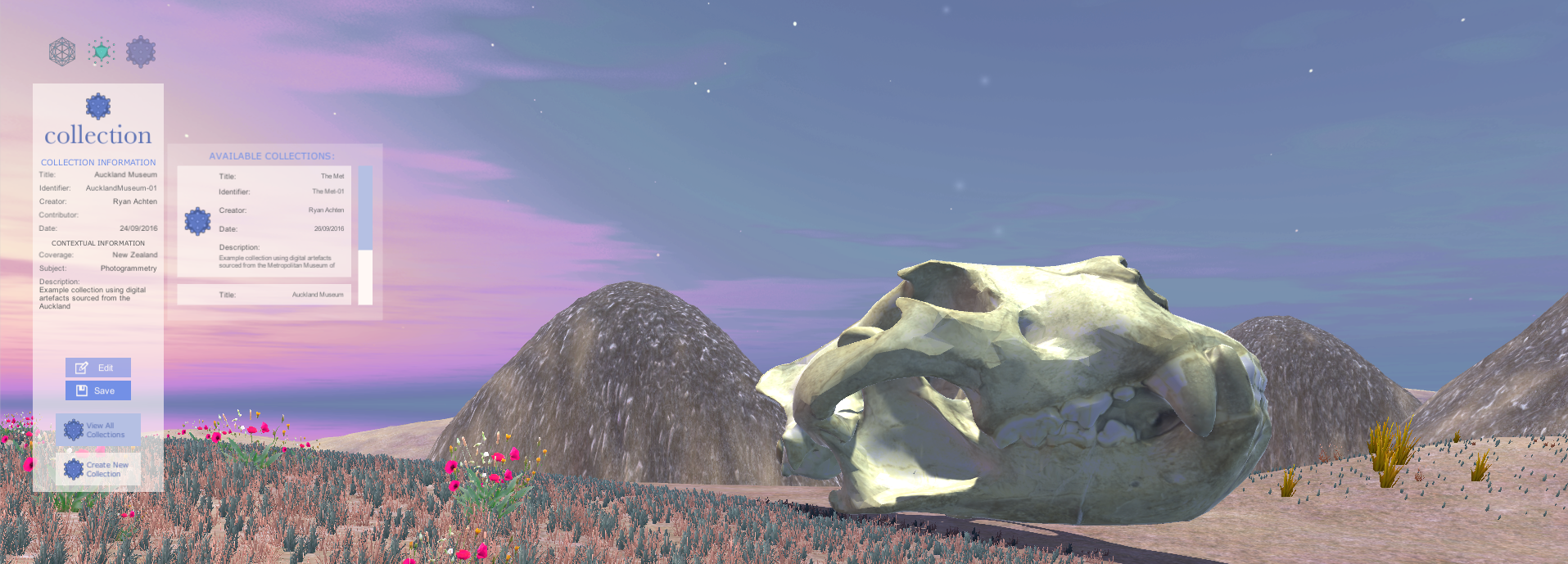
3D Archive Interface for Cultural Heritage Artefacts
Vertice is a platform that enables cultural institutions and their visitors to collate and interact with digitised and born-digital 3D objects. Vertice was developed using the gaming engine Unity to provide functionality that supports the purposeful arrangement, contextualisation, and presentation of digital artefacts.
Through considered interaction design and subtle incorporation of gamification, Vertice anticipates how three-dimensional space can alter and enhance the way users interact with intangible cultural artefacts.
A variety of modern digitisation techniques – from sophisticated methods, such as MRI, to photogrammetry – empower everybody to produce digital 3D replicas of physical artefacts. See how 123D Catch generates digital artefacts that could comprise a Vertice collection
Vertice’s Import scene accessions an artefact’s 3D model, and associates it with contextual metadata that attests to its authenticity and cultural significance. An imported artefact will be available for browsing and organisation into collections
Information seeking for traditional media often takes place in two-dimensional space. Due to the three-dimensional nature of its content, Vertice reexamines this process and allows users to explore artefacts in a 3D environment that is idiomatic of a first-person video game
The Collection scene allows curators and visitors to group artefacts according to their own system of arrangement. This allows curators to preserve spatial relationships between artefacts, and prepare virtual exhibitions. It is also a space where could also allow visitors can gather their favourite artefacts
The gaming engine underlying Vertice supports many platforms. As such, it is possible to extend the software to support other forms of engagement: we envision that experiences could be created for virtual or augmented reality, gaming consoles, and mobile devices